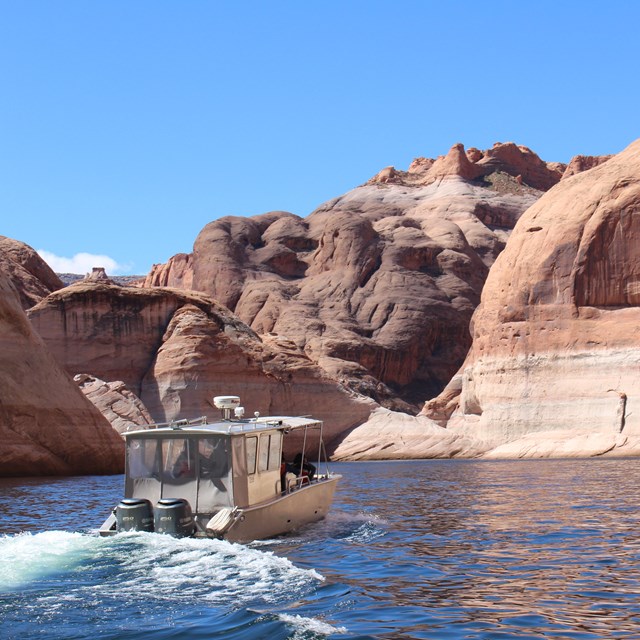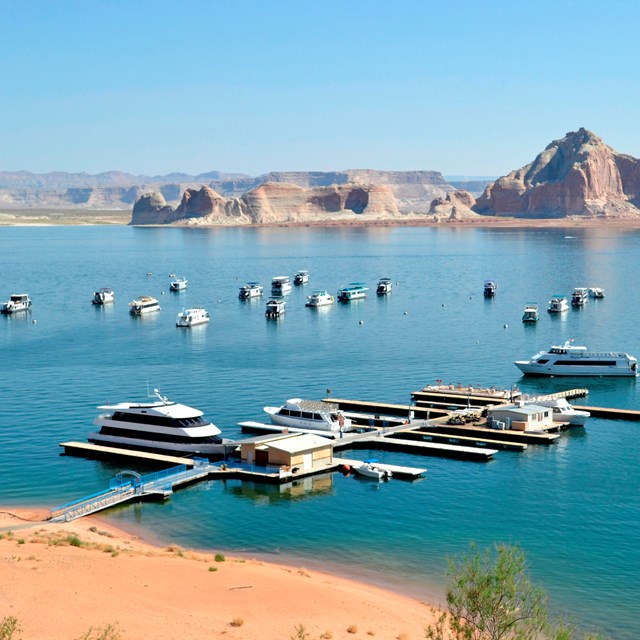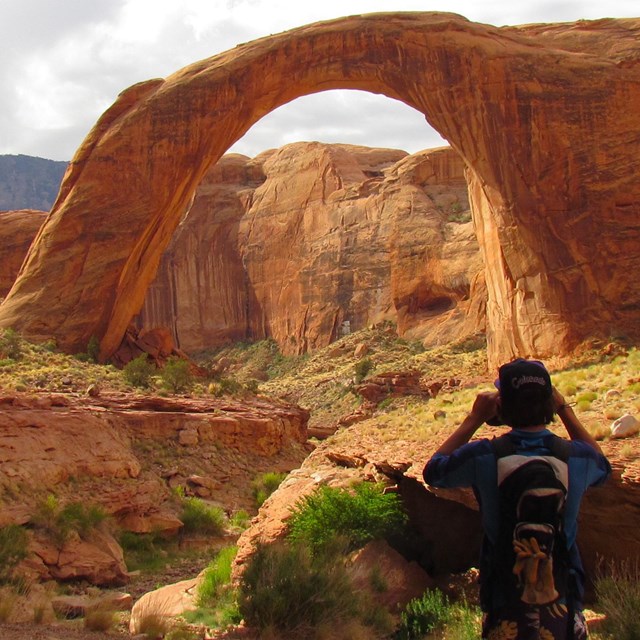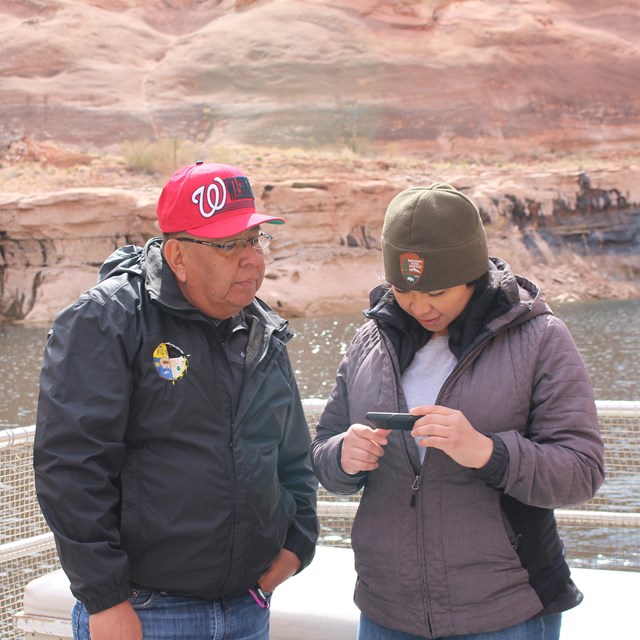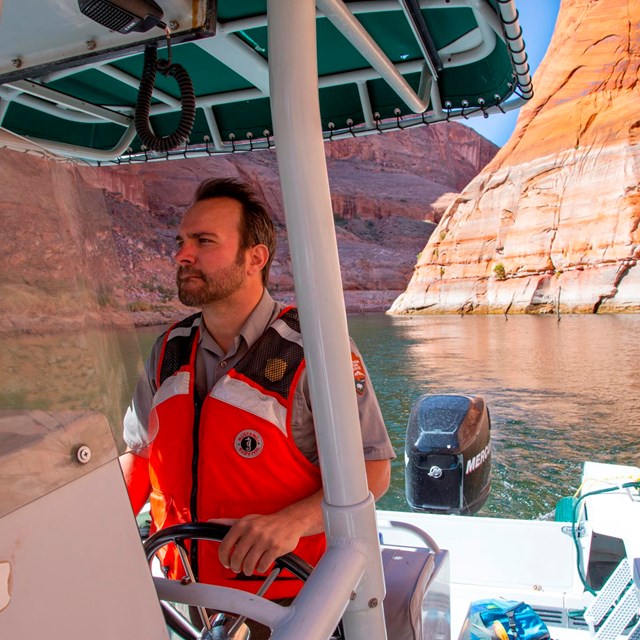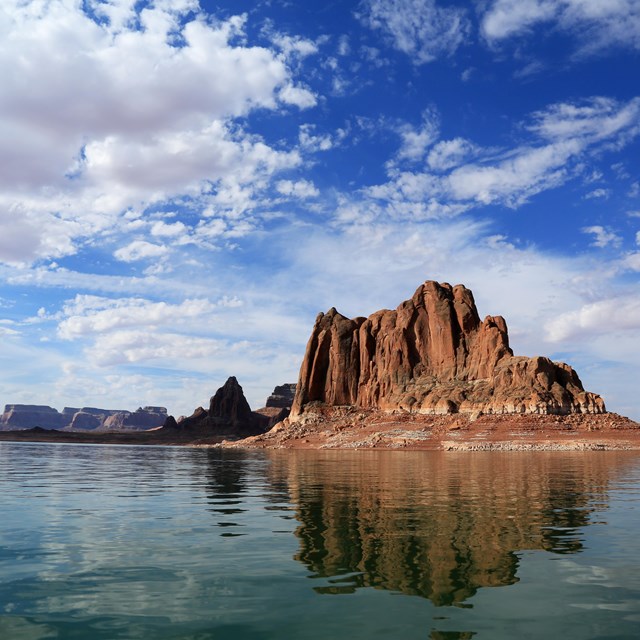An Extraordinary Natural BridgeEncompassing just 160 square acres of land, Rainbow Bridge National Monument is one of the smallest units of the National Park Service. However, what it lacks in size it more than makes up for with an abundance of unique and interesting features. The primary feature is, of course, Rainbow Bridge itself, one of the largest natural bridges in the world. During the summer months rangers may be on site daily at the Rainbow Bridge viewing area to provide interpretive programs and information on the geology and cultural history of Rainbow Bridge. Group programs can be arranged throughout the year with advance notice. Know Before You ComeYou can only reach Rainbow Bridge by boat, or by a approximately 14-mile hike around Navajo Mountain. The hike requires a permit from the Navajo Nation. If you do not have a boat of your own, rental boats are available at Wahweap, Bullfrog, and Antelope Point marinas. Concession operated boat tours are available on a limited schedule. 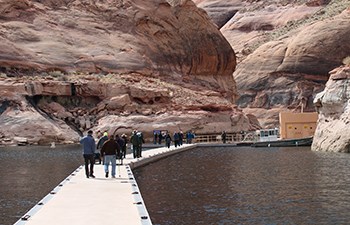
NPS At the MonumentMost visitors would arrive via boat to the courtesy dock, available for short-term docking while you hike to the bridge. At current lake levels, the dock at Rainbow Bridge does not reach land. Beach your boat and walk through muck to the trail at your own risk.
NPS / Edmonia Martinez How to Rainbow Bridge
|
Last updated: December 17, 2025

